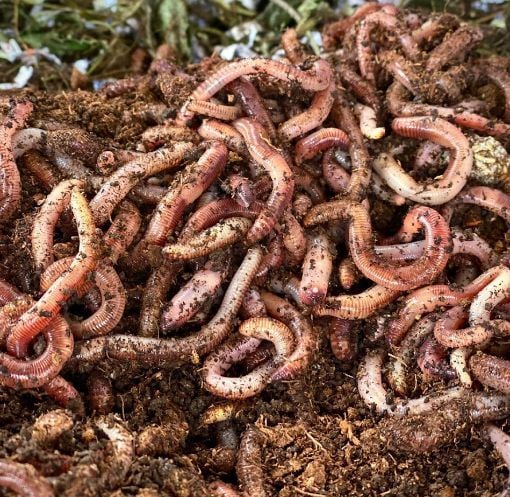The 8-Second Trick For Red Wiggler Express
Excitement About Red Wiggler Express
Table of ContentsRed Wiggler Express for BeginnersThe Only Guide for Red Wiggler ExpressSome Ideas on Red Wiggler Express You Need To KnowRed Wiggler Express - Questions
Vermicomposting certainly isn't a new practice. We have actually been doing it below at Uncle Jim's for decades. Yet with the global press for sustainability and with environmentally friendly practices expanding in appeal, people are ultimately happening and acknowledging the environmental advantages of red wiggler worms and composting. In this write-up, we'll talk about how vermicomposting sustains lasting horticulture and the environmental advantages of red wigglers and other earthworms.
This is the except it. If you want to review thorough concerning red wiggles, we have a whole short article committed to them here. Now, allow's enter the nuts and bolts of just how these worms sustain lasting gardening practices and profit the environment: Worm composting resembles a health club day for your soil.
When integrated into your yard dirt, these castings enhance its structure, oygenation, and water retention. This assists with plant growth and health and wellness and does not require the usage of any type of chemicals. Did you know that organic waste makes up a considerable portion of landfill product?
By diverting your kitchen scraps and backyard waste right into a worm composting bin, you're properly lowering the quantity of organic waste that finishes up in garbage dumps. Forget about chemical plant foods worm castings are the real bargain.
Red Wiggler Express Can Be Fun For Everyone

Keep the container in a trendy, shady spot to protect against overheating. Mix the nutrient-rich worm spreadings right into your yard soil or utilize them as a leading dressing for potted plants. You'll observe much healthier, better plants in no time! It actually is as easy as that. In a globe where sustainability is becoming increasingly crucial, red wigglers radiate as unhonored heroes of gardening.
Composting may appear like old information, however doing it with a container packed with worms possibly does not. Red wiggler worms use fantastic benefits to the organic gardener, creating both an all-natural fertilizer and an effective pesticide. And they consume your kitchen scraps. The value of red wigglers, a.k (Worm Farms United States).a. Eisenia fetida, depends on their waste matter, known as worm castings.
Worm spreadings may be bought at stores such as SBS in Winery Haven or Vineyard Gardens in West Tisbury, but to elevate the worms in a compost bed and harvest your very own spreadings is a lot more fun. The work of these worms is an element of sustainable living. Red wigglers are native to horse manure, where they burrow to lay eggs.
Not known Details About Red Wiggler Express
(https://issuu.com/rwigglerexnc)He covers the container with straw, then an item of old carpeting. Lynn discusses the manufacturing of castings and two uses: as a plant food and as a pesticide. It passes through them and adds calcium to make this abundant planet," she states.
"I did it to see if it would certainly make a difference on white flies and aphids. The red wiggler is a vast breeder, laying eggs as commonly as once a week - Worm Farms Near Me.
It takes 3 to five months for a child worm to get to sex-related maturity and the adult size of three inches. Their life period is 4 to five years unless of training course they are utilized for lure. As freshwater fish bait, wigglers wriggle on the hook and survive undersea longer than traditional earthworms.

What Does Red Wiggler Express Mean?

Several years ago the Stelle family moved into an Edgartown fixer-upper farm. "I intended to enter farming with points that didn't need to be often tended to day-to-day like a cow. We were introduced to worm farming and began with 50,000 worms. That seems like a lot, but they're extremely tiny." She originally bought her worms online from a worm ranch in Vermont.
As one of the Epigeic course of garden compost worms, the normally does not appear in soils. The worm is red or reddish-brown in shade and has a smooth, round form.
A red wiggler worm can grow up to four inches in length yet is typically only about 2 and a half inches. The worm has a little mouth located at the front of its head. It additionally has small bristles, called setae, which help the worm action and anchor itself to surfaces.
